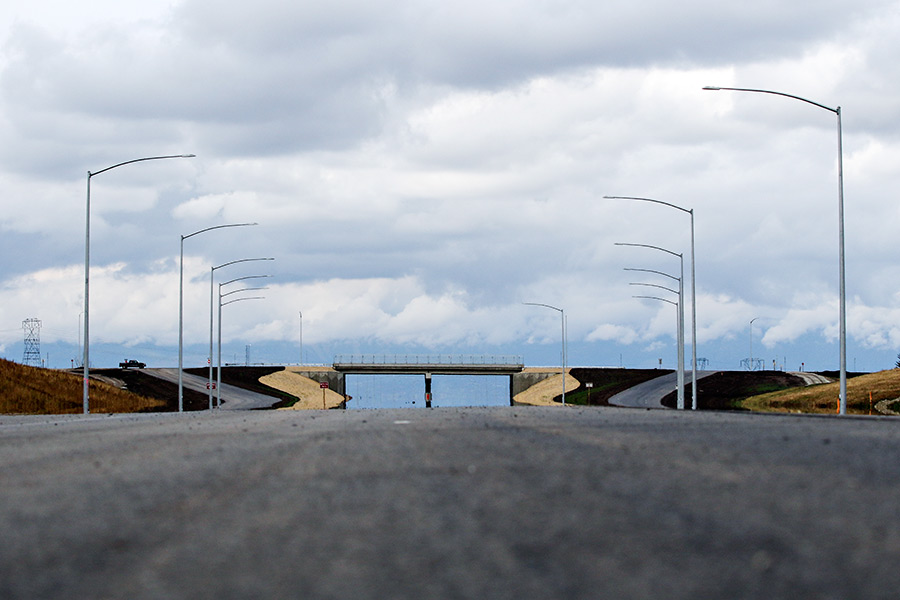The state Department of Transportation is seeking federal grant money to finish the southern half of the U.S. 93 Alternate Route, also known as the bypass, in Kalispell.
During a hearing with the Flathead County Commission, Ed Toavs, administrator for the DOT’s District 1 in western Montana, said he has submitted finishing the bypass for consideration for a federal Better Utilizing Investments to Leverage Development (BUILD) grant.
Completing the alternate route means removing the roundabouts on the southern half of the bypass, from Foys Lake Road to the intersection with U.S. Highway 93 south of Kalispell. Instead of roundabouts, there would be four-lane traffic served by full interchanges, with overpasses and four access ramps.
The commission was pleased with the information, noting that the two-lane road with roundabouts can bottleneck at busy points during the day.
“If you’re headed south on the alternate route, headed toward Airport Road, at 7:45 in the morning, it’s horrible, the back up is just amazing,” Commissioner Pam Holmquist said.
Total, the project would likely cost in the neighborhood of $20 million, Toavs said in an interview after the meeting. To make the project even more attractive for selection, MDT is splitting it into two sections: first, from north of the Foys Lake roundabout to the south end of the sound wall. Then, the second half of the project would finish out the length of the bypass.
“Splitting it into two projects, it’s more affordable for our program, each one could be $10 million to $12 million a piece,” Toavs said.
The U.S. Department of Transportation has about $1.5 billion in discretionary funding for BUILD grants, which replace the Transportation Investment Generating Economic Recovery (TIGER) grant program.
In order to be selected for a grant, the project must be one of three projects chosen statewide, and then compete with all the other projects around the country for funding.
“It would be a lot to consider, a lot of competition,” Toavs said. “[Completing the bypass] is very deliverable; on that section we only have a small amount of right of way that we would need, a very little piece. If need be we probably could design around that. That’s a huge piece of the puzzle for us; if we have the property, capital improvement projects in western Montana are very attractive.”
Regardless of receiving the grant, Toavs said a consultant will still design the completed project to have the project available in order to compete for more funding in the future.
